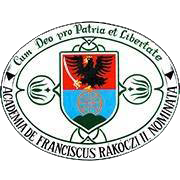Please use this identifier to cite or link to this item:
https://dspace.kmf.uz.ua/jspui/handle/123456789/1221| Title: | Traditional test versus e-test |
| Authors: | Papp Gabriella Szegő Dóra Пап Габріелла |
| Keywords: | tertiary education;e-test;traditional test;e-assessment;felsőfokú oktatás;e-teszt;hagyományos teszt;e-értékelés |
| Issue Date: | 2021 |
| Publisher: | IATED Academy |
| Type: | dc.type.conferenceAbstract |
| Citation: | Gabriella Papp, Dóra Szegő: Traditional test versus e-test. In L. Gómez Chova, A. López Martínez, I. Candel Torres (eds.): EDULEARN21. 13th International Conference on Education and New Learning Technologies July 5th-6th, 2021. Conference Proceedings. Valencia, IATED Academy, 2021. pp. 5029-5033. |
| Abstract: | Abstract. Traditional tests have long been used in education to differentiate between the degrees of knowledge. To assess students' knowledge of mathematics, they typically use paper-pencil type worksheets created by teachers that contain open tasks, so that the mastery of the solution process can be measured clearly. We still use them today. Nowadays, there is more emphasis on tests. With the development of technology, it has become increasingly important to create e-tests in mathematics education as well, the items of which include multiple choice, true-false, short answers, and the replacement of omitted concepts. In these cases, the process of solving the tasks is pushed to the background. The tests are delivered to the target group in a downloadable form or via online platforms. A year ago, we had to switch to distance learning unexpectedly, at which point e-tests, which were used for accountability, played a huge role. In the first semester of the 2020/21 academic year, I conducted research in Ferenc Rakoczi II Transcarpathian Hungarian College of Higher Education among second year Accounting and Taxation major students, in which I examined the accuracy and error possibilities of knowledge level measurement with the multiple-choice test and the traditional worksheet. The object of the research was to examine how accurately we can measure if we use only a multiplechoice test. To do this, I compare two e-tests (consisting only multiple-choice type of items) and a traditional (open-ended) worksheet the same group of students whose level of knowledge and reflections I observed during the lessons. The result shows that the traditional worksheet reflects the knowledge inferred from the observations, while the e-tests have large fluctuations. From this, I concluded that more accurate results need to be tested by mixed items. |
| Description: | https://library.iated.org/publications/EDULEARN21 |
| URI: | http://dspace.kmf.uz.ua:8080/jspui/handle/123456789/1221 |
| ISBN: | 978-84-09-31267-2 |
| ISSN: | 2340-1117 |
| metadata.dc.rights.uri: | http://creativecommons.org/licenses/by-nc-nd/3.0/us/ |
| Appears in Collections: | Papp Gabriella |
Files in This Item:
| File | Description | Size | Format | |
|---|---|---|---|---|
| Papp_G_Szego_D_Traditional_test_versus_e_test_2021.pdf | Gabriella Papp, Dóra Szegő: Traditional test versus e-test. In L. Gómez Chova, A. López Martínez, I. Candel Torres (eds.): EDULEARN21. 13th International Conference on Education and New Learning Technologies July 5th-6th, 2021. Conference Proceedings. Valencia, IATED Academy, 2021. pp. 5029-5033. | 1.13 MB | Adobe PDF | View/Open |
This item is licensed under a Creative Commons License





